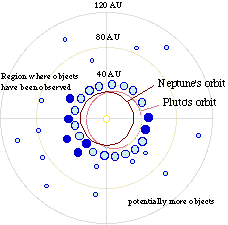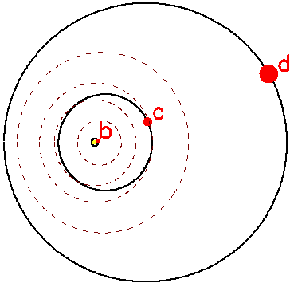How many planets orbit the sun?
I was wondering if there is a new planet? Are there planets (a tenth planet?) after Pluto belonging to our solar system? What are the names of the new planets discovered in the solar system? Are there any objects that orbit the sun that are not in the same plane as the planets, excluding Pluto, comets, asteroids? Do we know any names to any other planets than those in our solar system? If yes, could you give me any examples?
As of today, January, 26, 2001, it's known that only 9 planets orbit the Sun. There have been many solar system objects that have been discovered recently, but none of them have merited the status of planet. Certainly, none of them are the mysterious Planet X!
These objects have been called asteroids, minor-planets, trans-neptunian objects, or objects of the Kuiper belt. We'll use the word trans-neptunian object (TNO) because that simply means an object past Neptune. The first trans-neptunian object discovered since Pluto was in 1930 was discovered in 1992. Since then, well over 300 of these objects have been found.
One of the most recent discoveries of a TNO was in October of 2000. Astronomers found a huge TNO and called it 2000 EB 173. It is between 300-700 kilometers in size and as far as non-planets go in the solar system, it is second only in size to asteroid Ceres. It orbits the Sun at 4.3-5.6 billion kilometers away, well beyond the orbit of Neptune. There is some debate as to how large an object has to be to be classified as a planet, but so far, 2000 EB 173 remains a TNO.
TNOs can have an inclination of orbit to the ecliptic of up to 40 degrees, but most are within a few degrees of the ecliptic and are certainly of a less inclined orbit than comets tend to be (many comets have an inclination of over 100 degrees!).
So, although no new planets have been discovered in our solar system, there have been quite a few discoveries of planet systems outside our solar system. One such finding was in April 1999 of three planets around Upsilon Andromedae. Many other findings have been made.
Submitted by Jana (New Jersey, USA), Sean (Ohio, USA), John (Ohio, USA), Saravanan (India), Puneet (India), Cassie (Colorado, USA), Jason
(January 26, 2001)













